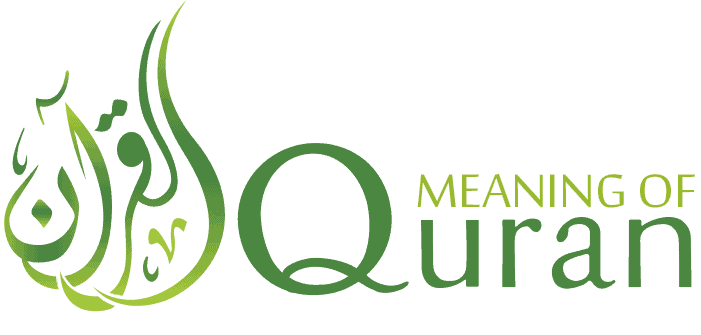Al-‘Alaq | The Clot
With the name of Allah, the All-Merciful, the Very-Merciful.
[96:1] Read with the name of your Lord who created (everything),
[96:2] He created man from a clot of blood.
[96:3] Read, and your Lord is the most gracious,
[96:4] who imparted knowledge by means of the pen.
[96:5] He taught man what he did not know.
[96:6] In fact, man crosses the limits,
[96:7] because he deems himself to be free of need.
[96:8] Surely to your Lord is the return.
[96:9] Have you seen him who forbids.
[96:10] a servant of Allah when he prays?
[96:11] Tell me, if he is on the right path,
[96:12] or bids piety, (would the former still forbid him?)
[96:13] Tell me, if he rejects (the true faith) and turns away,
[96:14] does he not know that Allah is watching (him)?
[96:15] No! If he does not desist, We will certainly drag (him) by forelock,
[96:16] a lying, sinful forelock.
[96:17] So let him call the men of his council,
[96:18] We will call the soldiers of the Hell.
[96:19] No! Never obey him, and bow down in sajdah, and come close to Me.
With the name of Allah, the All-Merciful, the Very-Merciful.
[96:1] Read with the name of your Lord who created (everything),
[96:2] He created man from a clot of blood.
[96:3] Read, and your Lord is the most gracious,
[96:4] who imparted knowledge by means of the pen.
[96:5] He taught man what he did not know.
[96:6] In fact, man crosses the limits,
[96:7] because he deems himself to be free of need.
[96:8] Surely to your Lord is the return.
[96:9] Have you seen him who forbids.
[96:10] a servant of Allah when he prays?
[96:11] Tell me, if he is on the right path,
[96:12] or bids piety, (would the former still forbid him?)
[96:13] Tell me, if he rejects (the true faith) and turns away,
[96:14] does he not know that Allah is watching (him)?
[96:15] No! If he does not desist, We will certainly drag (him) by forelock,
[96:16] a lying, sinful forelock.
[96:17] So let him call the men of his council,
[96:18] We will call the soldiers of the Hell.
[96:19] No! Never obey him, and bow down in sajdah, and come close to Me.
Tafsir
Overview of Surah Al-‘Alaq
- Title and Position: Surah Al-‘Alaq is the 96th chapter of the Quran. The title “Al-‘Alaq” translates to “The Clot,” referring to the embryonic stage of human development and symbolizing the creation and origin of human life.
- Verses and Structure: This surah contains 19 verses. It is renowned for being the first revelation received by the Prophet Muhammad, emphasizing knowledge, the act of reading, and the acknowledgment of God as the source of all knowledge.
- Themes and Messages: Major themes include the emphasis on learning and education, the creation and exaltation of humans, the importance of recognizing and worshiping God, and the warning against arrogance and disobedience.
- Significance in Islamic Thought: Surah Al-‘Alaq holds a significant place as the beginning of the prophetic revelation, highlighting the value of knowledge and the virtues of humility and devotion to God.
Detailed Explanation
- The Command to Read: The surah begins with the command “Read!” illustrating the importance of knowledge and learning. It signifies the beginning of the prophetic mission and the revelation of the Quran.
- Acknowledgment of God’s Generosity: It highlights God’s generosity in teaching humans what they did not know, underscoring the divine origin of knowledge and the intellectual potential bestowed upon humanity.
- Human Creation: The reference to the creation of humans from a clinging clot serves as a reminder of the humble origin of human life and the marvels of divine creation.
- Admonition Against Arrogance: The surah warns against arrogance and self-sufficiency, exemplified by the figure who rebels against divine ordinances, reminding believers of the need for humility and obedience to God.
- Divine Omnipotence: The closing verses emphasize God’s omnipotence and the inevitability of returning to Him, reinforcing the theme of accountability and the transient nature of worldly power.
FAQs
- Why is Surah Al-‘Alaq named “The Clot”?
- The surah is named “Al-‘Alaq” due to its reference to the embryonic stage of human development, symbolizing the beginning of life and human’s humble origin, as well as the broader theme of creation.
- What is the significance of the command to read in this surah?
- The command to read highlights the importance of knowledge and education in Islam, underscoring the role of revelation in enlightening humanity and guiding them towards truth and righteousness.
- How does the surah address human arrogance?
- It addresses human arrogance by presenting a contrast between the humble origins of humans and their potential for rebelliousness, emphasizing the necessity of recognizing one’s dependence on God.
- What does Surah Al-‘Alaq convey about the nature of God?
- The surah conveys God’s omnipotence, mercy, and role as the ultimate source of knowledge, guiding humans through revelation and reminding them of their accountability to Him.
- The surah is named “Al-‘Alaq” due to its reference to the embryonic stage of human development, symbolizing the beginning of life and human’s humble origin, as well as the broader theme of creation.
- The command to read highlights the importance of knowledge and education in Islam, underscoring the role of revelation in enlightening humanity and guiding them towards truth and righteousness.
- It addresses human arrogance by presenting a contrast between the humble origins of humans and their potential for rebelliousness, emphasizing the necessity of recognizing one’s dependence on God.
- The surah conveys God’s omnipotence, mercy, and role as the ultimate source of knowledge, guiding humans through revelation and reminding them of their accountability to Him.
Read more
